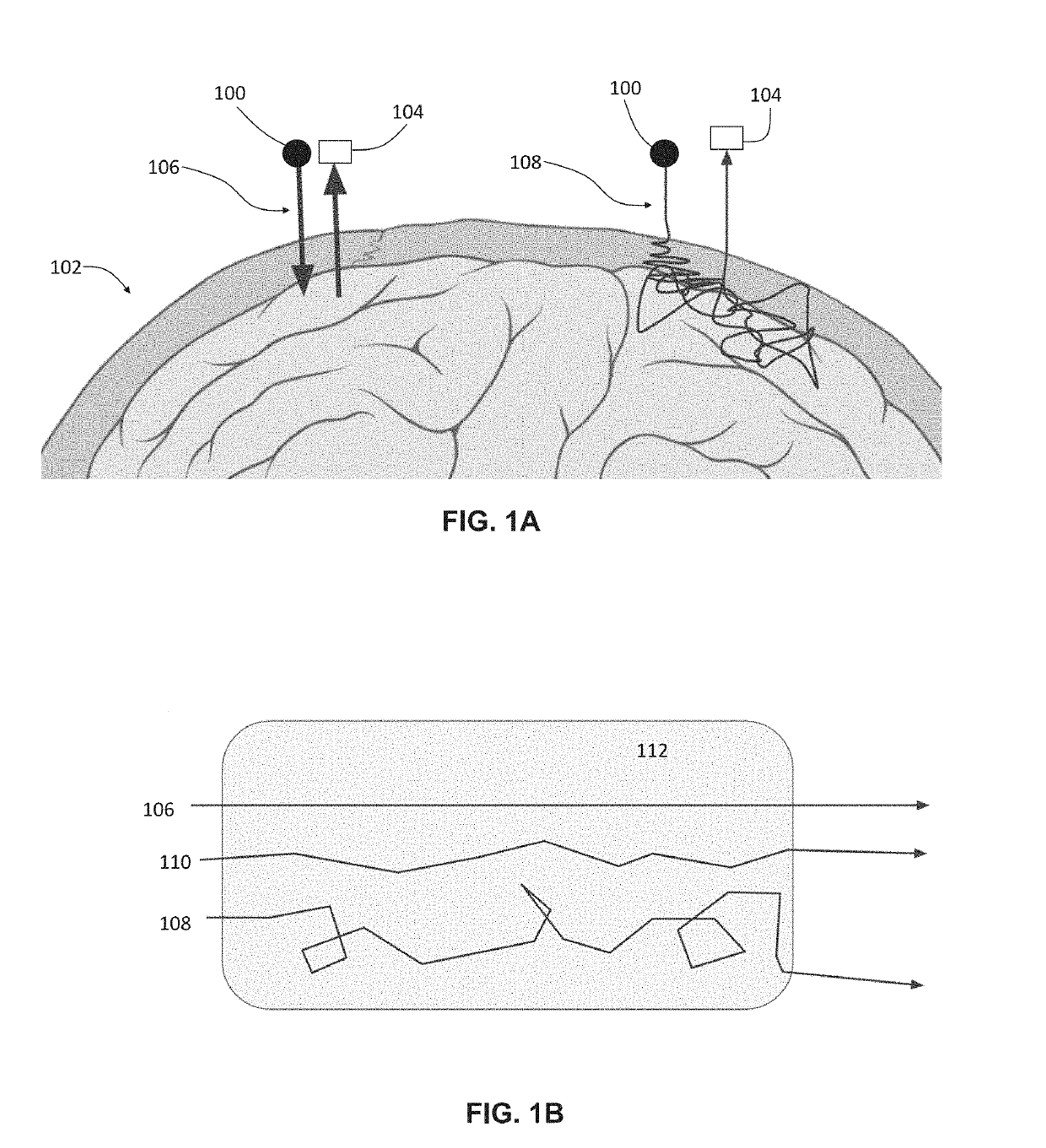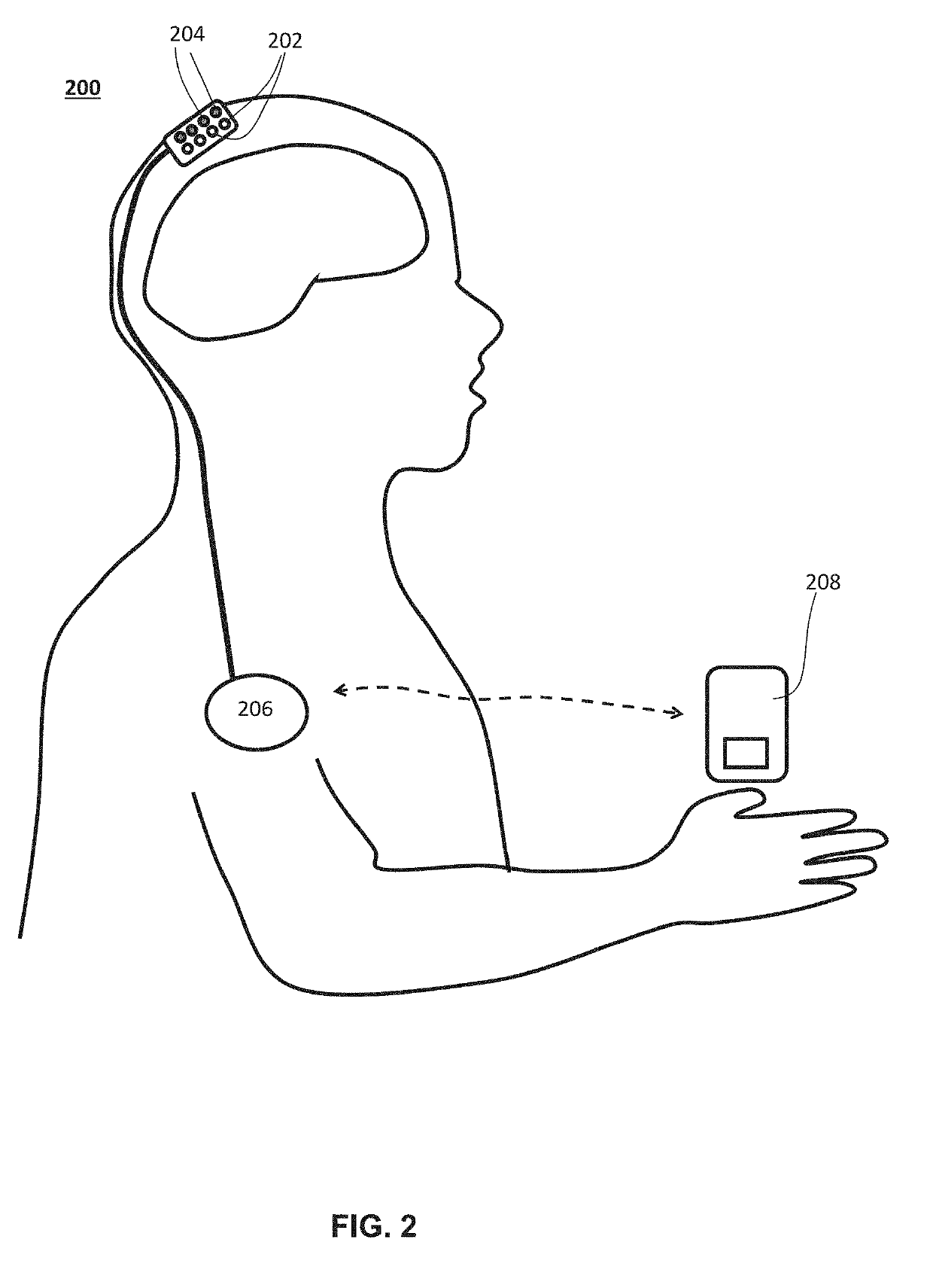Systems and methods for quasi-ballistic photon optical coherence tomography in diffusive scattering media using a lock-in camera detector
a technology of optical coherence tomography and camera detector, which is applied in the field of systems and methods for quasi-ballistic photon optical coherence tomography in diffusive scattering media using a lock-in camera detector, can solve the problem of relatively limited spatial resolution
- Summary
- Abstract
- Description
- Claims
- Application Information
AI Technical Summary
Benefits of technology
Problems solved by technology
Method used
Image
Examples
Embodiment Construction
[0026]Described herein are systems and methods for functional brain imaging using low-coherence interferometry, including noninvasive functional imaging of the human brain (e.g., as part of a brain-machine interface and / or for acquiring neural data or images with higher spatiotemporal resolution as compared to diffuse optical tomography). These systems and methods may comprise optical interference components and techniques using a lock-in camera, as opposed to a conventional camera, to provide a highly efficient and scalable scheme that enables detection of highly localized and high spatial resolution signals, to generate images or tomograms of deep structures in diffusive, high-scatter media. In general, lock-in cameras include a class of digital cameras in which multiple measurements of a light field are rapidly made at each pixel in a temporally precise fashion synchronized with an external trigger or oscillation and stored in multiple “bins” within each pixel, in contrast with c...
PUM
 Login to View More
Login to View More Abstract
Description
Claims
Application Information
 Login to View More
Login to View More - R&D
- Intellectual Property
- Life Sciences
- Materials
- Tech Scout
- Unparalleled Data Quality
- Higher Quality Content
- 60% Fewer Hallucinations
Browse by: Latest US Patents, China's latest patents, Technical Efficacy Thesaurus, Application Domain, Technology Topic, Popular Technical Reports.
© 2025 PatSnap. All rights reserved.Legal|Privacy policy|Modern Slavery Act Transparency Statement|Sitemap|About US| Contact US: help@patsnap.com



